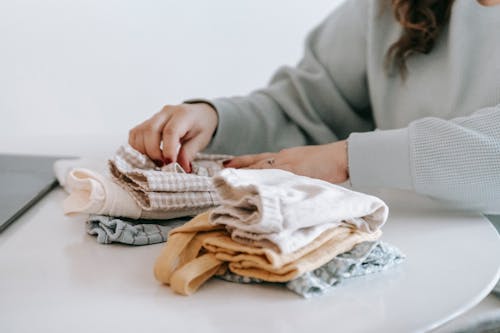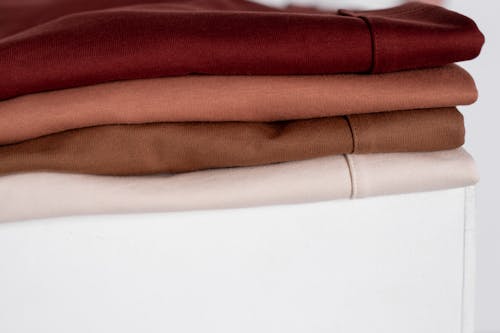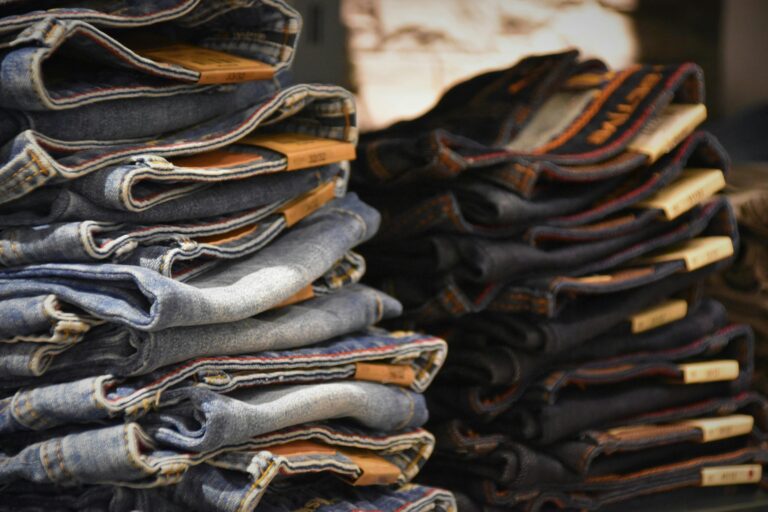In today’s environmentally conscious world, many individuals are seeking out safe laundry softeners that avoid harsh chemicals typically found in commercial products. A DIY natural laundry softener not only fulfills this need but also requires minimal effort and ensures a chemical-free alternative for your family’s laundry routine. By crafting your own softener, you gain control over every ingredient, guaranteeing they are non-toxic and safe for even the most sensitive skin types. Furthermore, this approach not only benefits your health but also contributes positively to the environment by reducing waste associated with traditional laundry products. With various simple recipes available, making your own laundry softener can be a delightful and efficient way to add softness to your clothes naturally.
With a user-friendly recipe that involves ingredients like vinegar and essential oils, you can create a safe and effective softening agent in less than five minutes1. This DIY method not only saves you money but also makes your laundry smell divine, with natural fragrances that won’t irritate your skin. Making the switch to a safe laundry softener is a rewarding choice that reflects care for both your family and the planet.

What is Natural Laundry Softener?
Natural laundry softener is a product formulated with non-toxic, biodegradable ingredients that effectively soften fabrics without the harsh chemicals found in most commercial options. This type of softener often includes common household items such as vinegar, baking soda, and essential oils. These ingredients provide numerous benefits of natural softener, like reducing static cling and eliminating odors while softening clothes naturally.
Conventional fabric softeners typically contain harmful substances such as Quaternary ammonium compounds (QACs), synthetic fragrances, and dyes that can lead to respiratory issues and skin irritation2. In contrast, natural alternatives promote a healthier home environment by avoiding these toxins3. For example, white vinegar can act as a natural fabric softener when added during the rinse cycle, effectively removing odors and softening fabrics2.
Implementing natural laundry softeners not only benefits personal health but also contributes to ecological wellness. These softeners biodegrade naturally, reducing water pollution and minimizing environmental impact, unlike their conventional counterparts3. Many individuals have begun to explore what is natural laundry softener, transitioning to safe and effective alternatives for their laundry needs.
Moreover, creating DIY natural fabric softeners at home offers cost savings while embracing sustainability4. For instance, one-quarter cup of a DIY mixture can be used per laundry load, making this approach practical and economical4. Opting for natural options provides a simple yet effective solution for achieving soft, fresh laundry without compromising safety.

Why Choose a DIY Approach?
Opting for a DIY approach to softener ensures better control over what goes into your laundry products. Many commercial softeners contain chemicals leading to skin irritations, respiratory issues, hormonal imbalances, and even cancer3. This knowledge empowers consumers to select all-natural ingredients, significantly reducing the risk of allergies and irritations for both adults and children3. The benefits of DIY laundry softener extend beyond personal health; they also favor the environment. By crafting your own softeners, you can minimize waste and avoid single-use plastic packaging commonly found in store-bought products5.
Cost is another significant factor. Homemade fabric softeners offer a budget-friendly alternative. Natural options are typically more affordable than traditional softeners while still delivering excellent results3. Additionally, the ability to customize scents with essential oils allows for a personalized touch, enhancing the laundry experience5. Eco-conscious consumers find satisfaction in knowing that their choices contribute to a healthier planet by reducing water pollution3.
Incorporating ingredients such as vinegar and baking soda makes the DIY approach effective. Vinegar not only softens fabric but also removes mineral buildup and detergent residues, ensuring cleanliness3. With a simple recipe, it’s easy to enjoy all the benefits of DIY laundry softener while maintaining a commitment to a safer home environment.
Common Ingredients for Natural Laundry Softener
Creating your own natural laundry softener can be straightforward and beneficial for both the environment and your skin. Common natural softener ingredients include white vinegar, baking soda, essential oils, and salt. Vinegar acts as a powerful softening agent, effectively reducing static and breaking down detergent residues. It is frequently recommended to add about 1/2 cup of white vinegar as a rinse in laundry cycles to help remove excess detergent and dissolve salts6.
Baking soda serves to enhance cleaning while acting as a deodorizer for your laundry. Salt is another essential component, particularly Epsom salt, which can soften water and fabric. The combination of 4-5 cups of coarse sea salt or Epsom salt is often used in DIY recipes as a carrier for the essential oils, providing both a refreshing scent and a softening effect7.
Essential oils, such as lavender and lemon, not only impart delightful fragrances but also have antibacterial properties. You can customize these essential oils according to seasonal preferences, making your laundry experience more enjoyable. The natural laundry softener components discussed not only yield softer clothes but are gentle and safe for sensitive skin, making them a terrific alternative to conventional commercial options7.
Step-by-Step Recipe for Basic Natural Softener
Creating your own DIY natural laundry softener recipe is both simple and cost-effective. Begin by mixing 1/2 cup of fine salt with 1 cup of hot water in a container until the salt fully dissolves. Next, incorporate 3 cups of distilled white vinegar into the mixture. If you wish to enhance the fragrance, consider adding 2-3 drops of essential oils like eucalyptus or lemon. This step allows you to customize the scent according to your preferences, making your laundry experience more enjoyable.
After thoroughly combining all ingredients, transfer the mixture into a clean bottle for easy storage. Before each use, shake the bottle well to ensure the ingredients are evenly distributed. When ready to do laundry, simply pour approximately 1/2 cup of the natural softener into the washing machine’s softener compartment during the rinse cycle. This method not only helps in softening clothes but also serves as a natural and eco-friendly alternative to commercial options, which often contain harmful chemicals.
In terms of cost, this DIY natural laundry softener recipe is budget-friendly. For instance, the total cost of making the vinegar-based fabric softener is about $2.17, and the cost per load comes to roughly $0.27 when you add essential oils. By employing this recipe, you are creating a safe product for your family and the environment while saving money89.
When contemplating how to make natural softener, remember that the ingredients not only yield a pleasant scent but also help in maintaining the quality of your fabrics. As you continue using this natural softener, you’ll likely notice your clothes feeling softer and smelling fresh without the harsh chemicals10.
How to Use Your Natural Laundry Softener
Using natural laundry softener is a straightforward process that can significantly enhance your laundry experience. To achieve optimal results, pour half a cup of your DIY softener into the designated softener compartment of your washing machine during the rinse cycle. Make sure to shake the bottle well before each use to ensure the ingredients are well mixed.
This method guarantees that your fabrics are softened naturally without leaving any harmful residues typically associated with commercial products. For added benefits, consider using wool dryer balls in the dryer to help reduce static cling and cut down on drying time.
It’s essential to be mindful of how to use DIY softener appropriately to reap its rewards. The natural ingredients, like vinegar and essential oils, work effectively to keep your clothes feeling soft and fresh while avoiding synthetic chemicals that can contribute to skin irritation11. You can easily find essential oils suitable for your needs, which allow you to customize the scent for each laundry load12.
Furthermore, remember that fabric softeners generally work by creating a thin layer over the fibers, reducing friction and leaving fabrics feeling smoother. A DIY approach can ensure that you avoid the harmful effects often associated with conventional fabric softeners, which can include significant environmental impact11 and potential allergens affecting sensitive skin11.
For more detailed guidance, you can check out this DIY natural laundry fabric softener recipe that emphasizes using safe, eco-friendly ingredients in your laundry routine13.

Additional Tips for Enhanced Softening
For those seeking tips for natural laundry softening, consider incorporating one cup of baking soda or Epsom salt into your DIY softener recipe. These ingredients enhance laundry softener effectiveness by working with vinegar to soften fabrics and eliminate odors. Essential oils extend personalization options; choose non-toxic, natural varieties to maintain safety while enjoying delightful scents in your laundry.
Regular machine maintenance contributes to softer clothes. Cleaning your washing machine prevents residue build-up that can compromise the effectiveness of your softening agent. Remember to air dry when possible, as air drying reduces stress on fabrics and contributes to their softness over time.
Lastly, reusable alternatives, such as wool dryer balls, serve as eco-friendly options. Wool dryer balls can last for up to 1,000 loads, offering both cost savings and environmental benefits11. Using these tips can create a more enjoyable laundry experience while enhancing laundry softener outcomes.
Eco-Friendly Alternatives to Commercial Softeners
Many households are exploring eco-friendly laundry alternatives to commercial fabric softeners. Traditional softeners often contain harmful chemicals such as benzyl acetate, benzyl alcohol, and limonene, posing risks to both health and the environment1415. Choosing natural fabric softener options, like vinegar, enhances both the cleaning process and environmental sustainability. Vinegar acts as an effective fabric softener and static reducer; adding just ½ cup to your wash can yield soft, fresh-smelling clothes without chemical exposure1516.
Baking soda is another excellent choice, improving fabric softness and neutralizing odors when included in the wash cycle15. For those looking for reusable options, wool dryer balls help separate laundry, allowing for better air circulation in the dryer. This functionality not only leads to softer fabrics but also shortens drying time by up to 20%15. Using natural alternatives helps reduce the risk of allergic reactions and skin irritations often associated with chemical-laden products16.
Incorporating these eco-friendly laundry alternatives contributes significantly to a reduced carbon footprint and promotes environmentally responsible practices. These options are not only effective but also economical, making them accessible to most households. Opting for natural fabric softener options helps maintain fabric integrity while protecting our health and the planet1416.
Common Issues and Solutions
Using natural laundry softeners can come with its own set of challenges. One prevalent problem is the insufficient scent lingering on clothes. This situation often arises from low-quality essential oils, which may be diluted or contain synthetic ingredients. Choosing brands known for their purity can significantly alleviate this17.
Another concern is the vinegar smell that can sometimes linger on your laundry. To tackle this issue, add baking soda during the wash cycle. Baking soda is recognized by the EPA’s Safer Choice program as a safer alternative to traditional fabric softeners18.
For those experiencing over-softening, it may be necessary to reduce the amount of softener used in each load until achieving the desired softness. This adjustment can help avoid laundry softener issues such as overly fluffy or sticky fabrics. In many cases, troubleshooting natural softener ingredients can lead to more satisfactory cleaning results19.
How to Make Your Laundry Smell Amazing
To create a fresh scent in laundry, incorporating essential oils into your natural softener offers a delightful solution. Choose oils based on personal preferences, such as lavender for relaxation, lemon for freshness, or eucalyptus for an invigorating aroma. Mix around 30-40 drops of essential oil into your fabric softener recipe, adjusting the amount according to the strength of the scent you wish to achieve20. This blending of scents is one of the most effective methods for enhancing laundry fragrance.
Another great technique includes utilizing homemade sachets filled with dried herbs like lavender or mint in your closet and dresser. These natural elements not only elevate the scent in your laundry but also contribute to a calming atmosphere in your living spaces. Adding lavender oil directly to your laundry can significantly improve the overall scent, with practical results highlighting that 16.6% of laundry smell improvement methods include using essential oils21.
For an alternative to traditional fabric softener, consider combining a quart of white vinegar with essential oils. Use ¼ to ½ cup of this scented vinegar solution during the rinse cycle to maintain freshness while effectively softening your fabrics20. Additionally, infusing absorbent cloths, soaked in this mixture, can be tossed directly into the dryer for further enhancement of the fragrance. Utilizing wool dryer balls can also bring a fragrant, eco-friendly alternative that aids in shortening drying time and smoothing wrinkles while keeping your clothes smelling amazing20.
Finally, remember to store your freshly laundered clothes in a cool, dry place with proper airflow. This simple step ensures that your laundry retains that fresh scent, providing a delightful aromatic experience every time you wear them. Alongside the delightful scents from essential oils and natural solutions, your laundry routine can transform into an enjoyable practice of enhancing laundry fragrance2021.

Final Thoughts on Natural Laundry Softener
Transitioning to a DIY natural laundry softener offers numerous benefits, from fostering a healthier home environment to achieving significant cost savings over time. By choosing non-toxic alternatives, you steer clear of harmful chemicals commonly found in commercial softeners, such as quaternary ammonium compounds and artificial fragrances, which can trigger skin irritations and allergies22. Embracing a sustainable lifestyle through homemade recipes empowers anyone to take control of what goes into their laundry routine, enhancing both the laundry experience and the ecological footprint.
The array of available recipes for natural laundry softeners makes it accessible for anyone to get started today. Common ingredients like white vinegar or Epsom salt not only soften fabrics but also help eliminate static, creating a simpler, more efficient laundry process23. As you integrate these solutions into your routine, you’re opting for a gentler approach that benefits both your family and the planet, avoiding harsh chemicals that harm aquatic life when washed down the drain22.
In conclusion, considering the final thoughts on the benefits of natural laundry softener reveals that the journey towards a safer, eco-friendly laundry experience is both rewarding and straightforward. With increasing awareness surrounding the effects of traditional softeners and the available alternatives, the path to healthier living is paved with simple choices. Start today and notice the positive change in your laundry habits for a more sustainable tomorrow.

FAQ
What are the benefits of using a DIY natural laundry softener?
DIY natural laundry softeners are safe for the environment, gentle on sensitive skin, free from harmful chemicals, and can be customized to your scent preference. This approach also helps reduce allergens and lowers your carbon footprint.
Can I use essential oils in my natural laundry softener?
Yes! Essential oils not only add a pleasant fragrance to your laundry but also come with antibacterial properties. Oils like lavender, lemon, and eucalyptus are popular choices, allowing you to personalize your softening experience.
Is vinegar really effective as a fabric softener?
Absolutely! Vinegar acts as a powerful softening agent, breaking down detergent residues, reducing static cling, and leaving your laundry feeling soft without any harsh chemicals.
How do I avoid strong vinegar smells in my laundry?
To minimize vinegar odors, you can add baking soda to your softener mix or incorporate essential oils for a more pleasant scent. Make sure to shake the bottle well before use to mix the ingredients properly.
Are there any common issues with natural laundry softeners?
Some common issues include insufficient scent or a lingering vinegar smell. To troubleshoot, consider using high-quality essential oils or experiment with the amount of ingredients to achieve your desired results.
What alternative ingredients can I use in my natural laundry softener?
Besides vinegar, you can use baking soda, salt, or Epsom salt to enhance softness and eliminate odors. Wool dryer balls are also an eco-friendly alternative for reducing static and softening fabrics in the dryer.
How can I make my laundry smell better with natural softeners?
You can improve the fragrance of your laundry by mixing essential oils into your DIY softener. Additionally, try using homemade sachets filled with dried herbs like lavender for an added aromatic touch in your storage areas.
How often should I clean my washing machine when using natural softeners?
Regularly cleaning your washing machine is a good practice to maintain freshness and performance. Consider doing this every few months to prevent any buildup of residues that could affect your laundry.
Can I combine different natural softener recipes?
Yes! Feel free to combine different natural softener recipes and ingredients to find the mix that works best for you. Just be sure all components are safe and compatible to ensure effective results.
Is it really cost-effective to make my own laundry softener?
Yes, making your own laundry softener can be very cost-effective over time. By using inexpensive household ingredients, you can save money compared to purchasing commercial products while benefiting your health and the environment.



